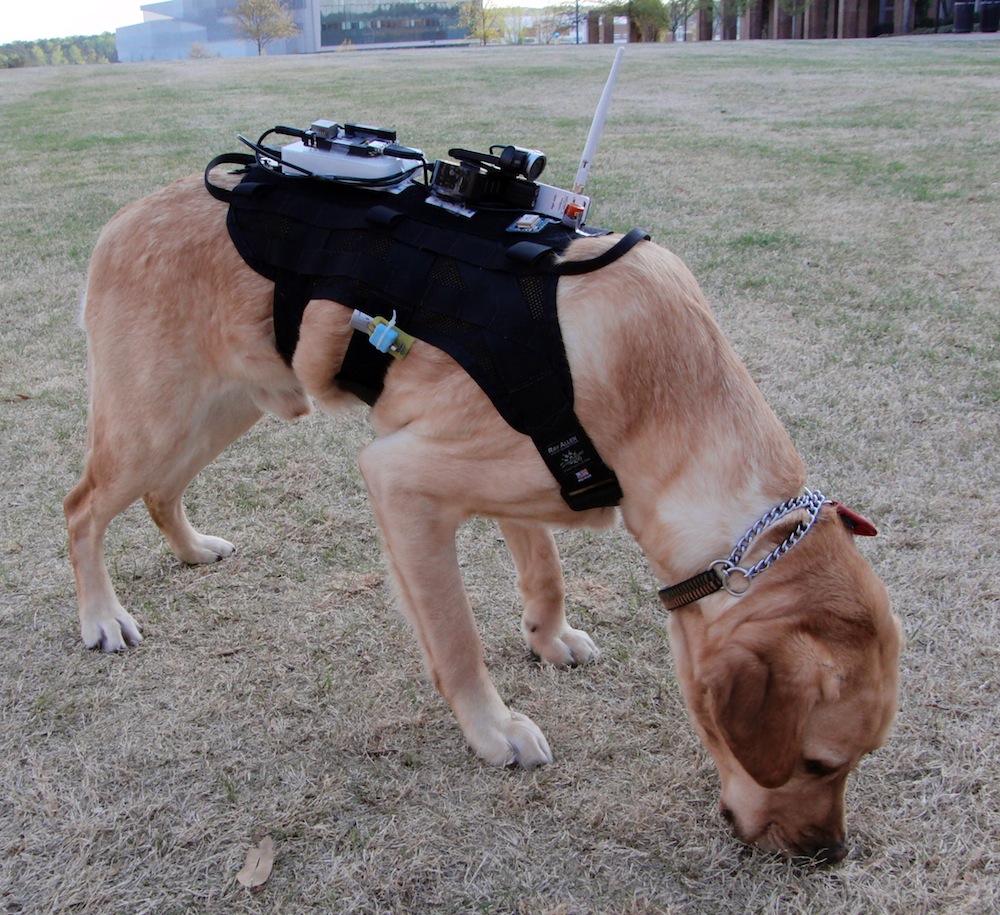Canine 2.0: Dogs in High-Tech Gear Could Aid Search-and-Rescue Efforts

High-tech-equipped dogs could be deployed as a fleet of roving sensors in a disaster zone to locate victims quickly and easily while relaying data about environmental hazards and other information in real time, scientists say.
Researchers are developing sophisticated harnesses for rescue dogs that aid in disaster relief and recovery. The vests are equipped with sensors and communication devices to help rescue teams leverage the dogs as part of a coordinated response.
After a disaster in a populated urban area, rescue teams must race to find and rescue people trapped in the rubble. Although well-trained search-and-rescue dog-and-handler teams are becoming increasingly critical to locating trapped survivors, they are still relatively rare, the researchers said. [10 Surprising Facts About Dogs]
"We have developed techniques and technological platforms to improve the efficiency of search-and-rescue dog training and to augment the current capabilities of search-and-rescue dogs in the field," Alper Bozkurt and David Roberts, researchers at North Carolina State University, told Live Science in an email.
Bozkurt and Roberts are part of a multi-institutional team that developed the Smart Emergency Response System (SERS), a coordinated group of humans, dogs, robots and drones that work together to find and save people during an emergency.
High-tech harnesses
The researchers modified off-the-shelf harnesses to combine microphones, cameras and environmental sensors that could transmit data from a disaster area.
Sign up for the Live Science daily newsletter now
Get the world’s most fascinating discoveries delivered straight to your inbox.
The harnesses could be customized depending on the situation. For example, if there was a natural-gas leak, the harness could be fitted with a natural-gas sensor. Or, if there were radiation, a Geiger counter could be attached.
The vests also include sensors that can monitor the dog's behavior and physiology, such as a heart-rate monitor, to track the dog's health or determine if the dog found a scent or object of interest.
The high-tech harnesses aren't meant to replace dog handlers, but rather to work with them. Wireless communications devices could send information about the environment or the dogs' well-being to a command center or to dog handlers nearby.
The researchers embedded communication technology into the harness — speakers and vibration devices — so that handlers could remotely relay commands to the animals, such as "perform a search" or "return back." They are training the animals to respond to nudges from the vest, "like a vibrating cellphone," using reward-based training.
Dogs do what robots can't
The harness technology will be especially useful for times when search-and-rescue dogs are sent off-leash to explore larger areas or to climb rubble piles away from their handlers, the researchers said.
Dogs can perform tasks that today's robots can't, Bozkurt and Roberts said. For instance, robots can't match the dogs' cognitive capacity, eyesight, hearing range or sense of smell, all of which remain efficient even after long hours in dangerous environments. In addition, the animals can climb obstacles and locate victims easily and accurately, the researchers said.
This summer, the SERS team will compete against 20 other teams in the Smart America Challenge, a competition to highlight state-of-the-art innovations from U.S. research that will be held in Washington, D.C.
"We are still in the testing process, and our preliminary results are very promising," Bozkurt and Roberts wrote.
Follow Tanya Lewis on Twitter and Google+. Follow us @livescience, Facebook & Google+. Original article on Live Science.











